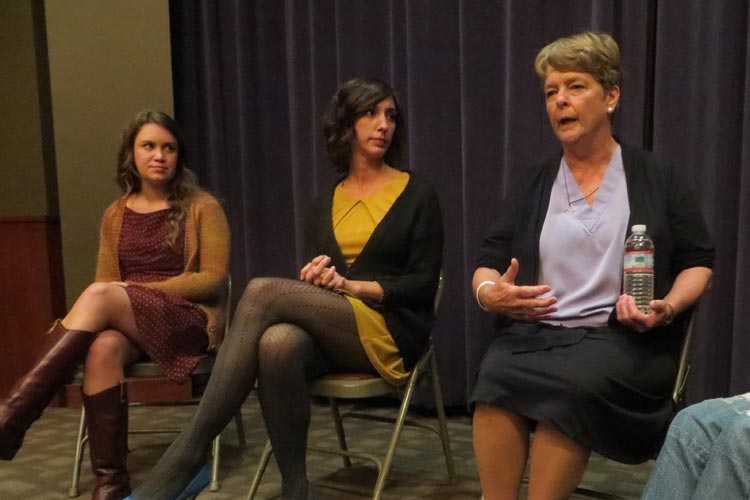The following questions and answers are excerpted from a conversation that followed the NBR screening of After Tiller.
Dr. Robinson, what was your initial response when you were approached to appear in this documentary?
Dr. Robinson: I said absolutely not. We were not interested in doing any movies or press of any sort. It’s not about us; it’s about the patients. But then as time went on, we got to know [the directors] Martha and Lana, and it began to look like it might be nice to work with them. And then that whole Kermit Gosnell business came out, that creepy guy in Philadelphia doing all that illegal stuff. And we suddenly thought that if we’re not willing to get up and show our face and explain to people what we do and why do it, that Kermit Gosnell will be the face of third trimester abortion. He was a filthy guy, and this is not a filthy practice, this is a practice of compassion. I think it’s important for people to know that. These are patients that need love and compassion and respect.
“This is a practice of compassion. I think it’s important for people to know that.”
How did you choose the particular patients to feature in the documentary? We do not see their faces, but we hear it in their voices and see it in their body language.
Wilson: We actually gave all the patients that agreed to be in the film the choice of showing their faces or not. And almost all of them did not want to show their faces. They wanted to stay anonymous because they were going back to their communities and were afraid about people finding out and we wanted to respect that. And I think that anonymity does give them a power, it makes them more of an every woman that the viewer can relate to, but I think it also helps to visualize the sigma around abortion. We did a lot of audience testing to figure out the best way to feature a wide spectrum of patients from fetal anomalies to maternal indications. But the ordering was really tricky and what we eventually landed on that worked was first starting with a very ambiguous case that you didn’t know a lot about, the girl who’s crying in the operating room with Dr. Carhart. That’s something that puts you right in the emotional center of the story. To say, this isn’t easy for anyone. And then we went with a case that was the easiest to understand first, to get people over that hump, the idea of third trimester abortion. And then we gradually made them more and more complicated, ending with that sixteen year-old girl’s case. It’s amazing how if you take one of those cases out of context, for example if we just showed the sixteen year-old girl, people would react abhorrently. But if you put it in the context of the larger film, not just the other patients but Dr. Robinson’s explanation of why she made that decision to do the abortion and putting it in the larger context of women making decisions for their lives, people come away from the film really getting it. The ordering was really important in getting people to be on the same page as the patients.
You can’t retire because they aren’t enough of you that are trained to do this procedure. What is the future of third trimester abortions for women that are going to need them?
Dr. Robinson: I shudder to think. We just finished training a wonderful thirty-five year-old doctor. A couple of other people have expressed interest. It’s a long training. The real issue isn’t going to be finding the doctors because the doctors who come and spend any time with us get hooked into this very quickly. They see you are able to help every patient that walks in the door, which is unique in medicine. Here comes a patient with a very clear-cut problem that we can fix. She’s always sad, she’s always surprised – of course, no one ever thinks they are going to have an unexpected pregnancy. So the doctors come and see you can actually spend time talking to your patients, and that’s a great luxury that most doctors don’t have. I get to sit in the recovery room and just yak with my patients sometimes. And I think we can ease this awful time for them by talking and listening, and listening and listening, and doctors see that and say, “I would love to do this work.” The problem is the number of venues to do it. When Dr. Tiller was assassinated, Shelly and I thought about starting our own clinic. But then you have to fundraise, you have to run a small business, and I’m not a businessperson, I’m a doctor. So we gave up on starting a clinic. There are only three clinics that are willing to take on the hassle, which includes protestors and all the legal complaints they file. I don’t know what’s going to happen. What about the poor woman from Brownsville Texas that doesn’t have two dimes to rub together and already has eight children to feed, and can’t get birth control, let alone a trip to an abortion clinic that is twelve hours away? That’s the killer. The well-off middle class women will always be okay. The poor women are the ones that are going to suffer.

